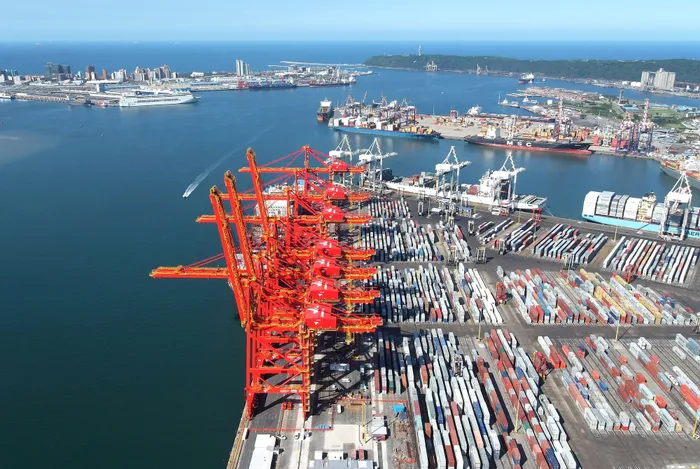Transnet ready for retail season as Durban Port boosted by new R967m cranes: Creecy
LOGISTICS

Speaking at an event to officially receive two of the cranes, Transport Minister Barbara Creecy said the equipment marks a key milestone in Transnet’s 18-month Recovery Plan and Reinvent for Growth Strategy, which are beginning to yield measurable results across the utility’s operations.
Image: File
Banele Ginindza
Transport Minister Barbara Creecy has said that Transnet is fully geared up for the upcoming retail season following the arrival of four new ship-to-shore (STS) cranes at the Durban Container Terminal (DCT) — a R967 million investment expected to significantly enhance cargo-handling efficiency, capacity, and competitiveness.
Speaking at an event to officially receive two of the cranes, Creecy said the equipment marks a key milestone in Transnet’s 18-month Recovery Plan and Reinvent for Growth Strategy, which are beginning to yield measurable results across the utility’s operations.
"This is affirmed by the recently concluded citrus season, where Transnet Port Terminals (TPT) recorded an impressive 19% year-on-year increase in volumes handled across its terminals, with the Durban Container Terminal (DCT) Pier 2 recording a notable 28.8% increase," Creecy said on Thursday.
"Volumes handled at the ports increased by 48 000 units (TEUs), 54% up on last year with Transnet . Since July, we have been reaching or exceeding our weekly TEU targets, and I am pleased to report that there are no longer queues at our port terminals."
Creecy confirmed that TPT has allocated R4 billion for new equipment acquisitions in the 2025/26 financial year, underscoring the state’s commitment to revitalising logistics infrastructure.
The new cranes, supplied by Liebherr Africa, feature cutting-edge technology designed to improve energy efficiency and operational resilience. They replace an ageing fleet that had reached the end of its lifecycle and will support faster vessel turnaround times.
Creecy reaffirmed that private sector participation (PSP) remains a cornerstone of government’s strategy to revitalise South Africa’s freight logistics system.
"We are now focused on moving with speed to modernise and expand DCT Pier 2. The conclusion of this transaction is another clear demonstration of our commitment to embrace private sector participation." she said
"I can confirm that the Request for Information (RFI) process for private sector partnerships in the logistics sector, including our ports, was launched and successfully completed in May 2025. This process has gauged market appetite and gathered crucial information to inform the subsequent Request for Proposal (RFP) stage.
"I want to be clear on the principles guiding this process, State ownership remains the strategic infrastructure of our ports and rail network will remain in public ownership, safeguarding these assets for future generations."
Creecy also welcomed the recent KwaZulu-Natal High Court ruling that cleared the way for finalising the equity partnership to modernise and expand DCT Pier 2, calling it a “landmark transaction” for the port’s transformation.
Transnet Group CEO, Michelle Phillips, said the cranes are part of a wider capital investment programme aimed at strengthening TPT’s cargo-handling fleet.
Earlier this year, the company unveiled 20 straddle carriers and nine rubber-tyred gantry cranes (RTGs) for DCT’s Pier 2 and Pier 1, respectively.
"This investment is already yielding tangible results, which is affirmed by the recently concluded citrus season, where DCT Pier 2 recorded an impressive year-on-year increase of 28.8%," Phillips said.
Phillips added that the new cranes, positioned along the terminal’s edge, offer advanced cargo-handling capabilities with increased lifting capacity and reduced energy consumption, allowing Transnet to operate efficiently under higher wind conditions and meet global trade standards.
The Durban Container Terminal Pier 2 remains the largest and busiest container facility in Southern Africa, handling 60% of South Africa’s container volumes. It is also the only facility in Africa equipped with tandem-lift cranes capable of hoisting 80 tons at a time.
BUSINESS REPORT